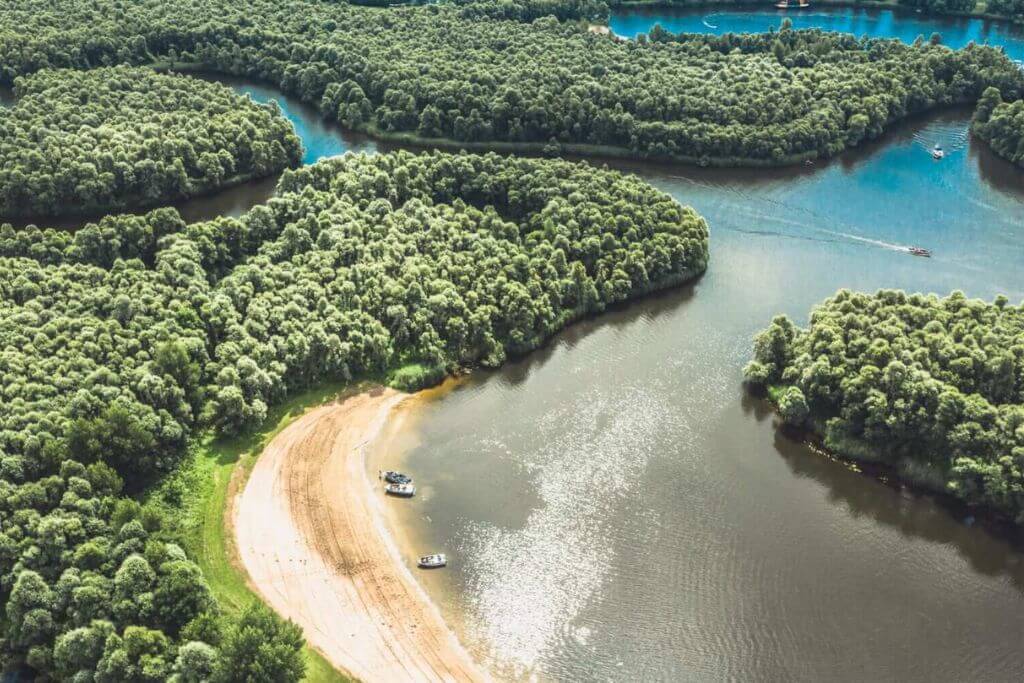The last remaining freshwater tidal area in Europe is Biesbosch National Park. It is the consequence of multiple rivers coming together and forming a fascinating delta where rare wildlife and vegetation flourish. You can do almost anything in Biesbosch National Park, from camping, hiking, and bicycling to horseback riding and canoeing and everything in this magnificent network of narrow and large waterways.
History Of Biesbosch
This region, which was referred to as the Grote Hollandse Waard in the middle ages, was made up of arable polder areas that were dotted with villages and hamlets. Due to political and economic instability in the 15th century, the dikes that had previously safeguarded the area underwent considerable neglect. As a result, during the infamous St. Elizabeth flood of 1421, the dikes failed. Numerous communities were lost, 300 km2 of polder were swamped, and thousands of people drowned. A widespread misconception is that this flood essentially overnight formed the Biesbosch. However, over the course of the decades that followed the storm, the network of rivers, mudflats, and willow woods that you can now find emerged.
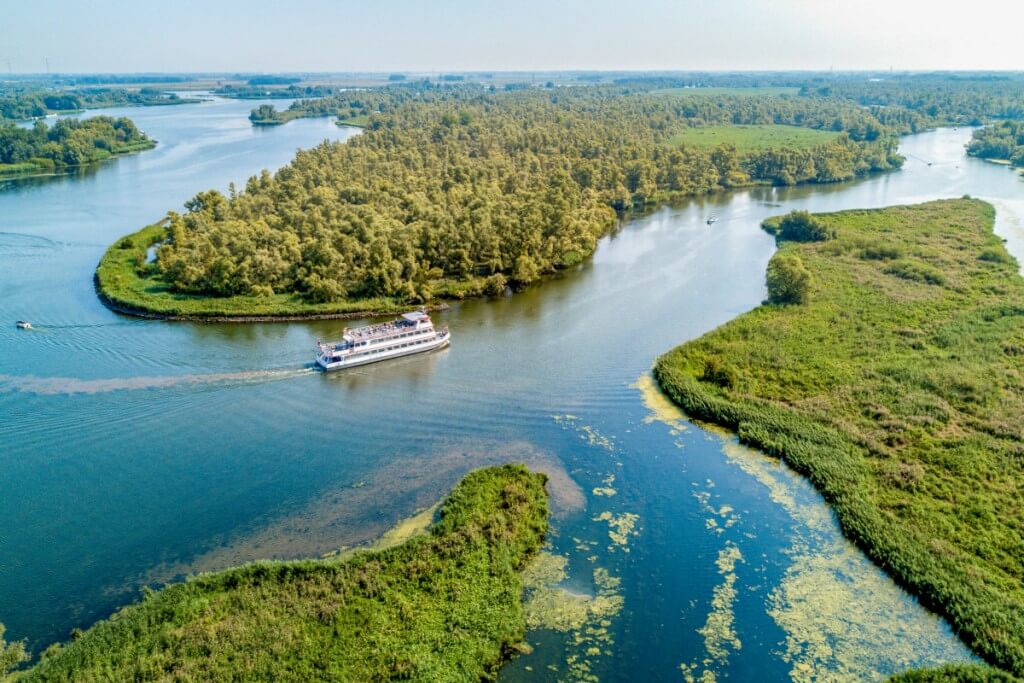
Large portions of the Biesbosch were reclaimed in more recent times. A sizable portion was reverted to polders. To make the great rivers Meuse and Rhine easier to regulate, their courses were somewhat altered. Several minor streams were also blocked off at their upstream ends to reduce the likelihood of flooding in populated regions. The Biesbosch has largely lost its function as a river delta as a result of multiple such alterations and now only receives water from the rivers during times of significant releases.
Until 1970, the tides may alter the water’s level by up to two meters. However, most of the sea’s effect was lost with the creation of the Delta Works. Only the northernmost portions of the Biesbosch still have a tidal difference, and even then, it is only 20 to 80 cm.
In 1994, the National Park was established.
Getting There
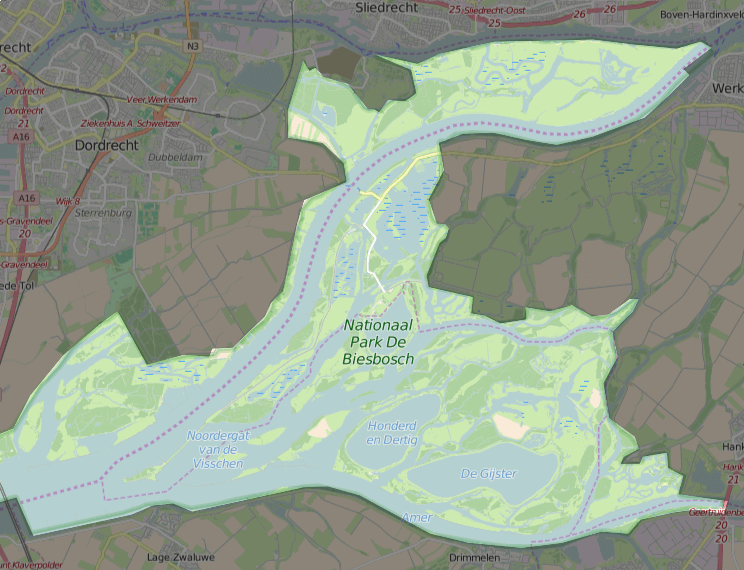
The two visitor centers in Dordrecht and Drimmelen, as well as the Biesbosch Museum in Werkendam, are the usual venues to begin a visit to the Biesbosch. There are other towns near Biesbosch, some of which have charming harbors if you have a boat, but the visitor centers provide a wide range of services, such as parking, tours, hiking and bicycling paths, and the ability to rent bikes or canoes.
Biesboschweg 4, the visitors center in Drimmelen. To get to Drimmelen, take the A59 to exit 32-Made, and then follow the indications. Breda is the finest significant connecting point when using public transportation. Take bus 123 (direction Raamsdonksveer) from Breda’s train and bus station, and get off at the “Gemeentehuis Maden” stop. Take line 224 in the direction of Drimmelen from there, then exit at the “Haven” station.
Visitors’ Center for Dordrecht, 53 Baanhoekweg. Follow the A15 or A16 in a car, then leave Dordrecht (N3). Take the Hollandse Biesbosch exit off of the N3 and follow the directions. With an hourly direct bus service from Dordrecht train station to the center throughout the summer, this entrance may be the simplest for those traveling by public transportation. A second direct bus route, Biesbus line 801, is also available outside of the peak season. However, for this one, reservations must be made at least an hour in advance. Taking the waterbus, a boat connection that departs from the Merwedekade in Dordrecht and the Middeldiep in Sliedrecht is another entertaining choice. Take line 10, Citybys Energiehuis, from Dordrecht Central Station to the waterbus stop, and get out at the “Merwedekade.” It’s free to carry a bike on the water bus.
Related post Hoge Veluwe National Park: 7 Reasons Why You Should Visit Here
Move Around
One of the main reasons to come here, like in many parks, is to explore. You can usually do it by going on a hike, a bike ride, or a boat ride through the area. Of course, there aren’t many cars in this protected nature region.
From the visitor centers, many hiking paths range in length, from a short stroll to a full day of hiking. Routes for biking are the same. Bring your own bike or borrow one from the Biesbosch museum or the Dordrecht visitor center. In contrast, Maia Ligfietspunt, Stevensweg 79a, leases out many different types of bicycles, including standard bicycles, recumbent bicycles, electric bicycles, and freight bicycles (a popular Dutch way to take kids along).
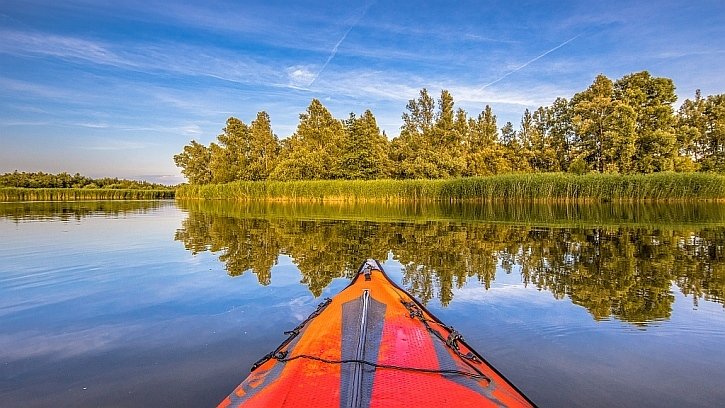
Boating and canoeing are common means of transportation because there are so many nearby rivers and waterways. You can either bring your own boat or canoe, or you can rent one. In either case, be sure to get the water chart, which is offered in the visitor centers. There are many challenging underwater sand plates and shallow areas in the Biesbosch. Aside from showing where you may go, the map also shows where you can dock and which waterways are only for canoes and rowboats. Additionally, it offers advice on how to make the most of the park by combining water transportation with some light trekking.
Choose one of the scheduled boat tours if you’re not confident with your navigation skills. A schedule of events, including various arranged boat trips, is available on the park’s (Dutch language) website. These trips are sometimes paired with a guide for extra information, other times with a trip to the museum, etc. Always try to make reservations in advance.
Things You Can See In Biesbosch National Park
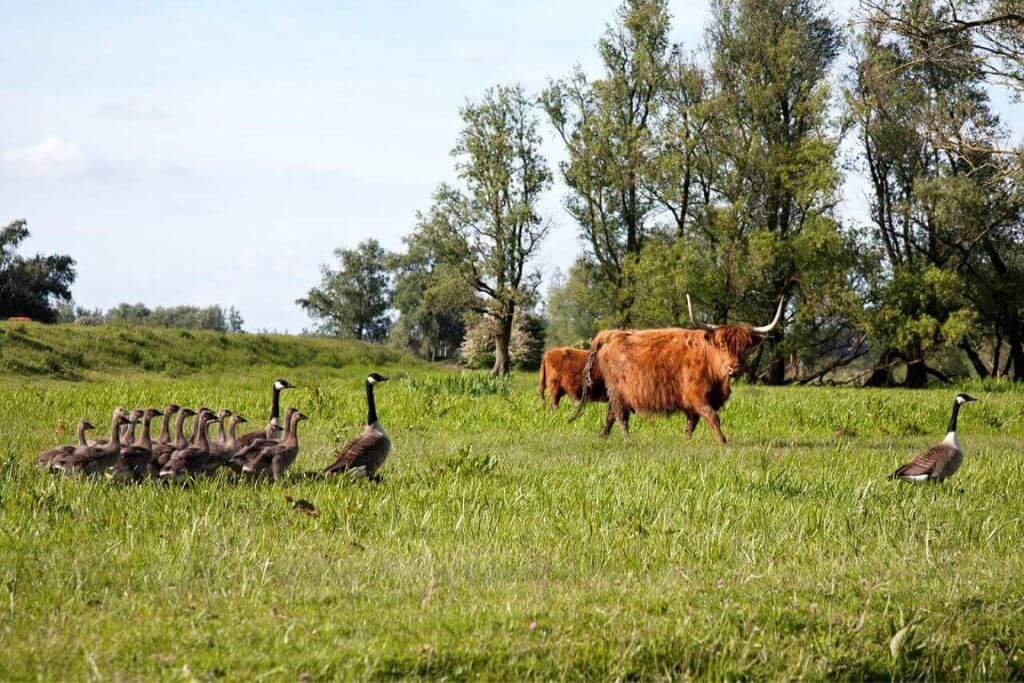
A significant component of the Biesbosch is recreation. People travel here to appreciate the nearby natural beauty and the lake. Consider quaint tiny rivers and willow forests, as well as a variety of birds and the occasional beaver. The Biesbosch’s nature is accessible, serene, and of a whispering beauty. There aren’t any historic structures to see, but you may try to spot a beaver in its place.
The Netherlands has a superb collection of birds among its wildlife. A solitary White-tailed Eagle couple has stayed here for a while, and in 2011 they even built a nest. Wading birds thrive in the numerous low-water regions, with Pied avocets and spoonbills being two of the most well-known species to frequent the Biesbosch wetlands. Of course, there are several perching birds and raptors.
Regular visitors to the area include roe deer, and of course, humanely handled Highland cattle are a typical sight. Since 42 of the creatures were returned to the Biesbosch between 1988 and 1992, the beaver has come to represent the region. There are currently thought to be 300 beavers living there in all, and their footprints are all over the place.
Read more 7 Fantastic National Parks To Explore The Wildlife In The Netherlands
Get On The Boat And Explore Biesbosch National Park!
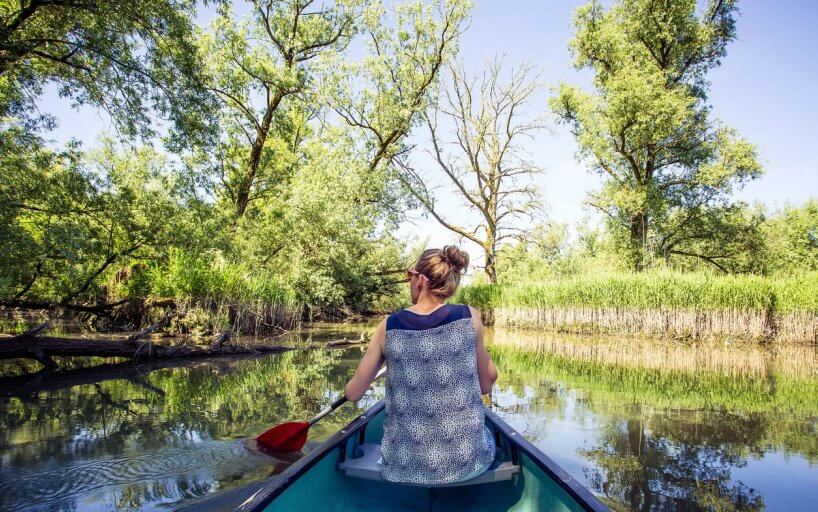
For many years, the National Park has prioritized sustainable water recreation. All boating sports are possible due to the abundance of small and large creeks. In the Biesbosch waters, you can see anything from opulent yachts to straightforward canoes. However, some smaller creeks don’t permit larger or motorized boats.
Unless you’re already on a boat, you might want to hire one, so you can navigate the park on your own. You don’t need to require a boating certificate for smaller vessels. There are rental agencies in every town around the Biesbosch, as well as, of course, in the visitor centers, and they rent out a variety of properties. You can typically rent by the hour (sometimes with a two-hour minimum), by the half-day, or by the day. Prices for a full day range from about €15 for a canoe to €50 for a small motorboat to €150 for a bigger sloop. You would typically need to put down a deposit of up to €250 for the larger boats.
Climb aboard a tourist boat. These pre-planned visits are more convenient and less adventurous, and you may add lunch or even dinner if you like. One can easily reserve one at the visitor centers (ideally in advance), but many “host hotels” also offer this service. Prices for a two-hour journey start at about €10.
Enjoy the outdoors by bicycle or on foot. On foot or the bike, you may explore a good portion of the Biesbosch, including the national park. Some potential routes can be found at the information centers. You’ll also need a boat for routes inside the park, though. You may walk some excellent routes that mix lovely vistas of the Biesbosch area with hospitable settlements right outside the park. You can board a little ferry called “t Markpontje” in Terheijden’s tiny harbor to cross the Mark River. It will lead you to De Haagse Beemden, another natural region. You can continue biking from there to Breda.
Camping In Biesbosch
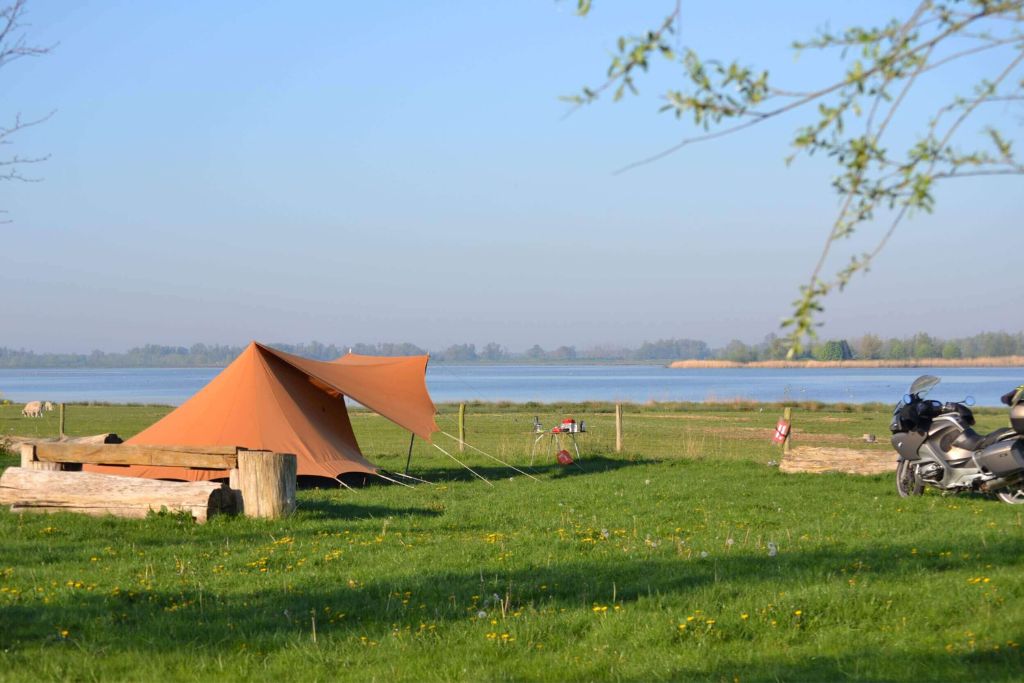
Camping around Biesbosch is suggested at De Biesboschhoeve. In the heart of the park, on an island, is where this farm is situated. About 40 black and white cows reside there, along with a tiny camping area, which is only accessible by boat. There are basic amenities available. Your tent doesn’t have electricity, although there are a few outlets in the toilet facility. Along with tending to their herd of 150 Scottish highland cattle, the farmer and his wife also look after the island’s flatlands. You may purchase sausages from the local highland cattle meat at the camping ground at Biesbosch.
Camping in Biesbosch is one of the best things you cannot miss when visiting here!
Post for you Top 10 Most Stunning Regions in The Netherlands
